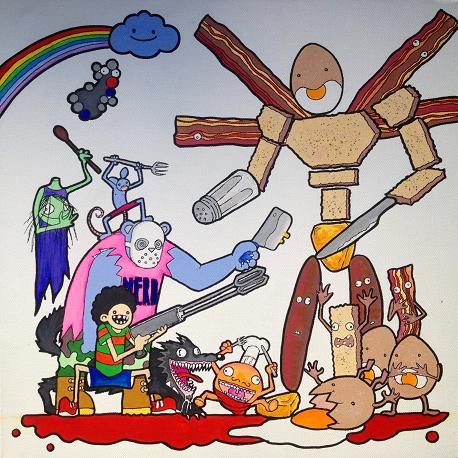[dropcap style=”font-size:100px; color:#992211;”]O[/dropcap]f all the facepalm moments in recent scientific development, this one must be the facepalmiest.
‘Soft’ robots. How cuddly that sounds. And this near-indestructible entity with the vestiges of independent thought will be a force for good. Of course. The bots will be delighted to mangle themselves in burning buildings rescuing your puppy.
When they come riding drones through your upstairs window, raining plasma-weapon fire on your nearest and dearest, don’t say you weren’t warned.
That tinfoil hat doesn’t look so stupid now.
Untethered soft robot can literally stand up and walk on its own
When it comes to the development of soft robots, researchers have finally managed to cut the cord.
Engineers at Harvard’s School for Engineering and Applied Sciences and the Wyss Institute for Biologically Inspired Engineering have developed the world’s first untethered soft robot – a quadruped which can literally stand up and walk away from its designers.
Working in the lab of Charles River Professor of Engineering and Applied Sciences Robert Wood, a team of researchers that included Michael Tolley, Robert Shepherd, Bobak Mosadegh, Kevin Galloway, Michael Wehner and Michael Karpelson was able to scale up earlier soft robot designs, enabling a single robot to carry all the equipment it needs to operate – micro-compressors, control systems and batteries – on its back. The design is described in a paper in Soft Robotics.
“Earlier versions of soft robots were all tethered, which works fine in some applications, but what we wanted to do was challenge people’s concept of what a robot has to look like,” said Tolley, a Research Associate in Materials Science and Mechanical Engineering in the Wyss Institute and first author of the study. 
“We think the reason people have settled on using metal and rigid materials for robots is because they’re easier to model and control. This work is very inspired by nature, and we wanted to demonstrate that soft materials can also be the basis for robots.”
Compared to earlier soft robots, which were relatively small, and typically no larger than a steno pad, the system designed by Tolley and colleagues is huge, measuring more than a half-meter in length and capable of carrying as much as 7.5 pounds on its back.
The design process, however, was about more than simply scaling up the smaller robots.
“As soon as you start thinking about putting the basic components you need to make this work – micro-compressors, controllers and batteries – on an untethered robot, you need a design that can carry those parts,” Tolley explained. “You need to think about something that can handle much higher pressures, so there are materials challenges and there are design challenges and there are control challenges.”
Giving the untethered robot the strength needed to carry mechanical components meant air pressures as high as 16 psi, more than double the seven psi used by many earlier soft robot designs. To deal with that increased pressure, however, the robot had to be made of tougher stuff.
The material Tolley and colleagues eventually settled on was a “composite” silicone rubber made from stiff rubber impregnated with hollow, glass microspheres to reduce the robot’s weight. The robot’s bottom was also made from Kevlar fabric to ensure it was tough and lightweight.
The end result, Tolley said, was a robot that could stand up to a host of extreme conditions.
Researchers tested the robot in snow, submerged it in water, walked it through flames, and even ran it over with a car, and after each experiment, it walked away unscathed.
Though additional hurdles – such as increasing the speed of the robots and outfitting them with sensors – will be needed before soft robots become commonplace, Tolley said the creation of an untethered robot is a major step, one that has the potential to radically transform not only what robots look like, but what they might be used for.
“One of the things that limit our imagination is that factory robots are very large and scary and dangerous to be around,” he said. “As a lay person, you can’t just walk into a factory where industrial robots are working. But a soft system is inherently less dangerous, so you can start to interact with it more, and I think that opens up many more opportunities.”
Source: Harvard University
Illustration by Dan Booth not to be reproduced without his express prior permission

Some of the news that we find inspiring, diverting, wrong or so very right.



















